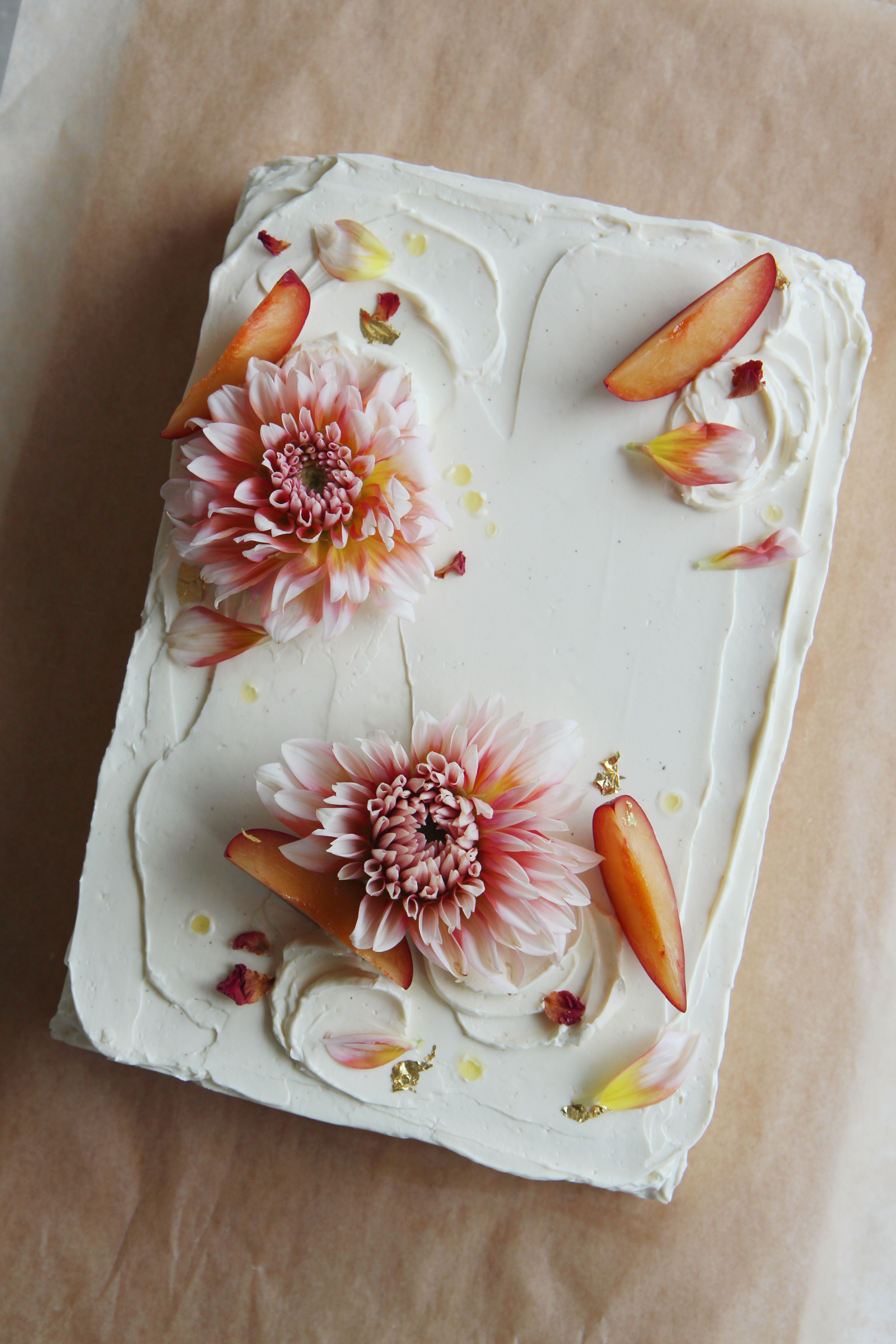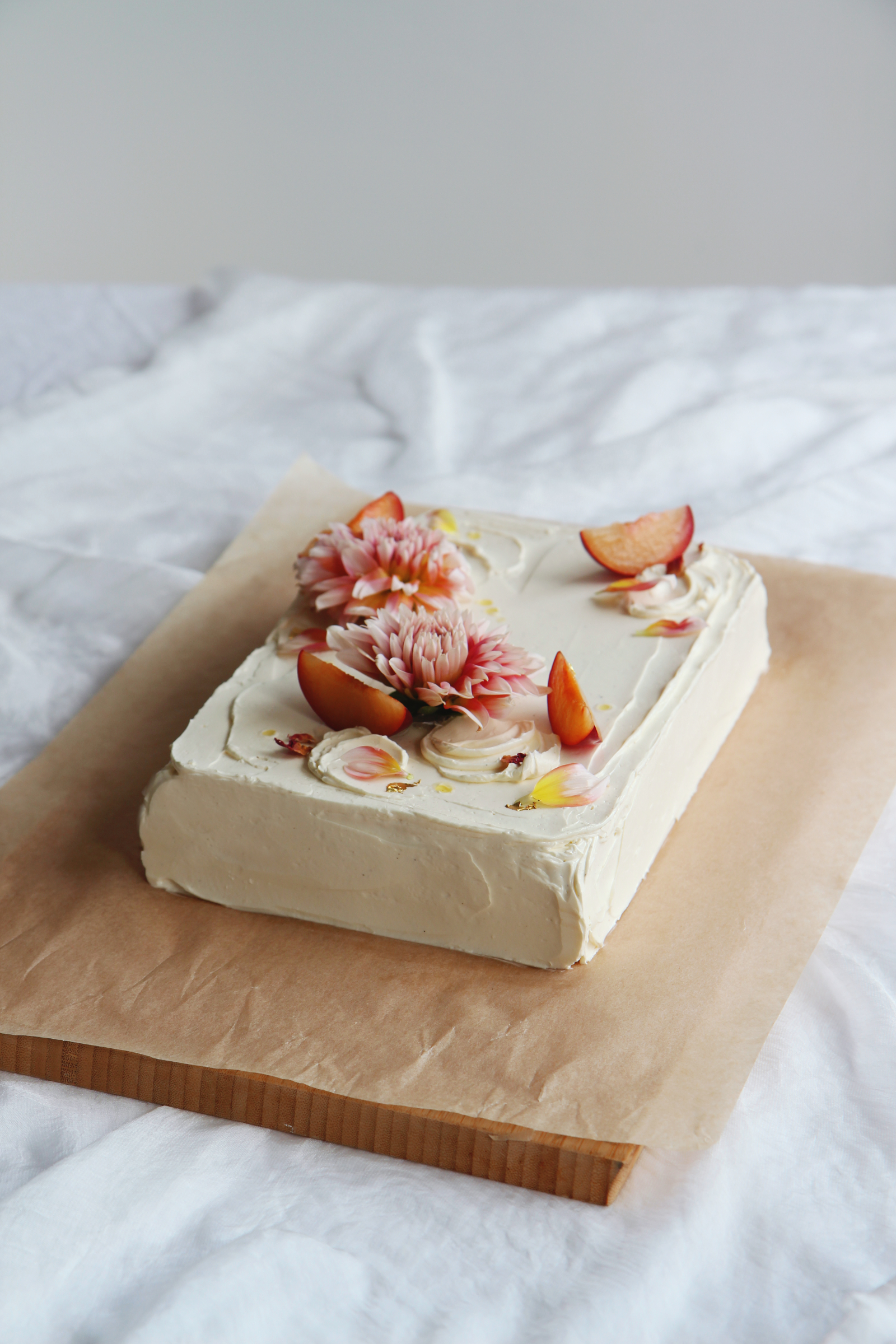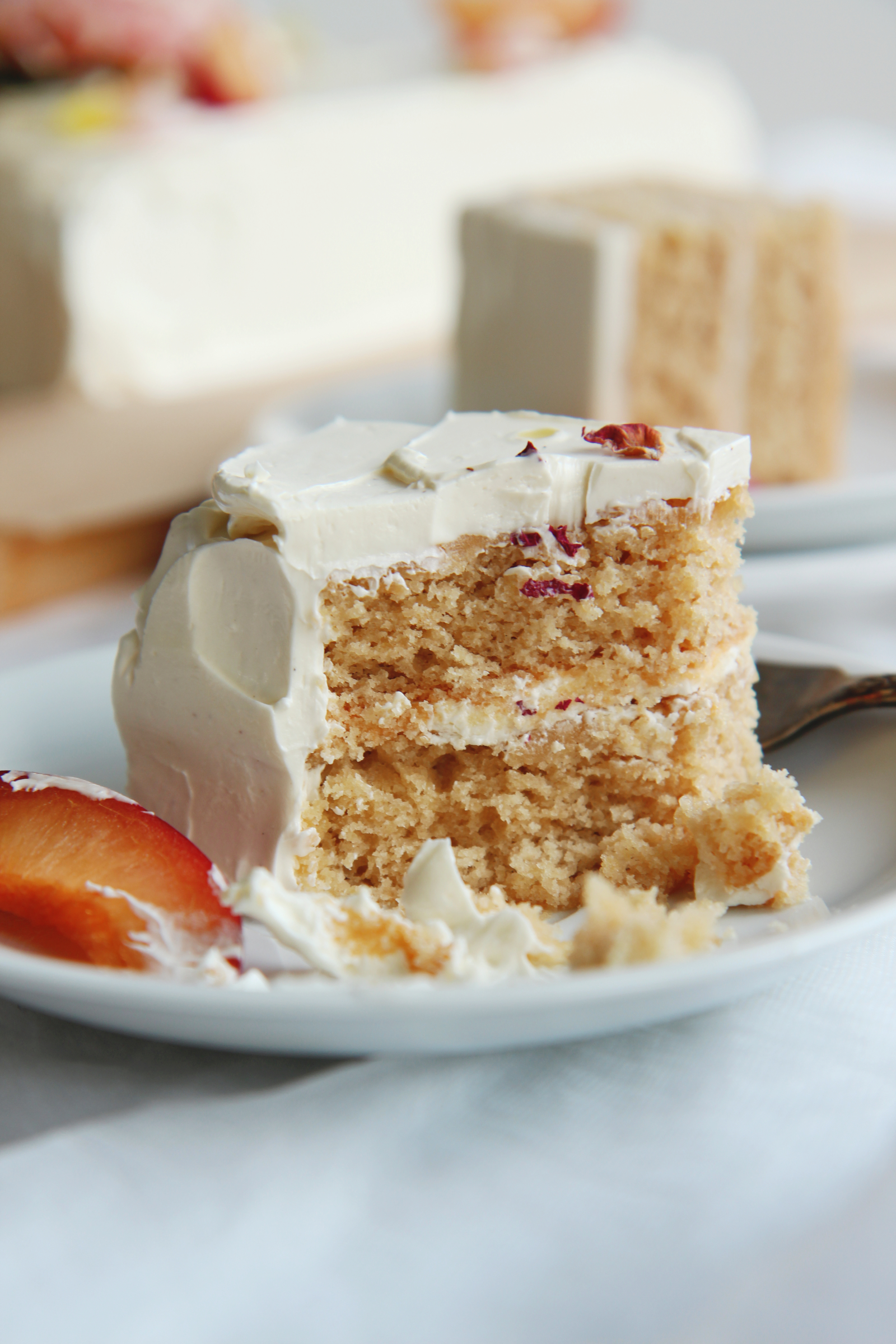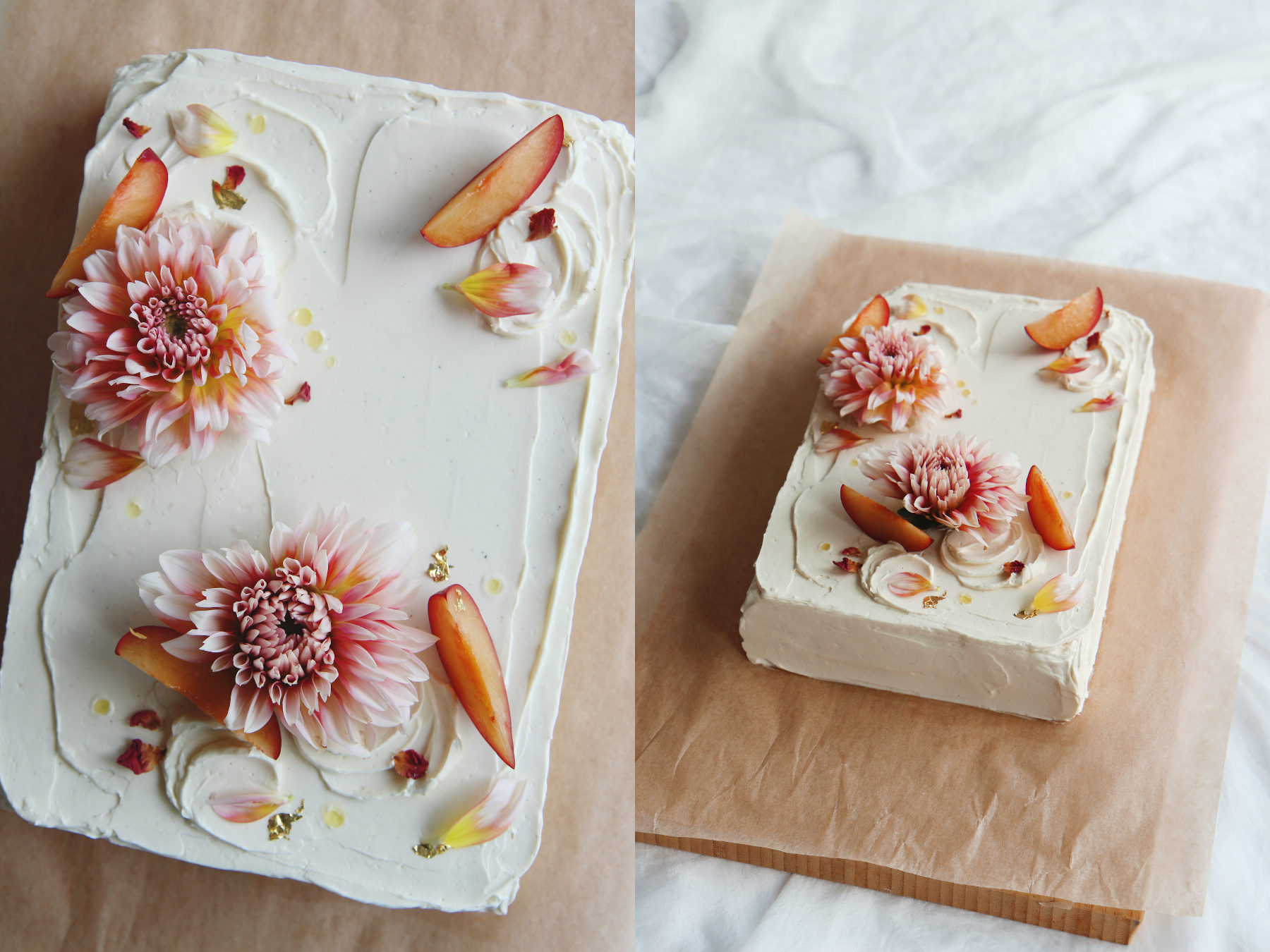Like this alabaster box whose art
Is frail as a cassia-flower, is my heart,
Carven with delicate dreams and wrought
With many a subtle and exquisite thought.
Therein I treasure the spice and scent
Of rich and passionate memories blent
Like odours of cinnamon, sandal, and clove,
Of song and sorrow and life and love.
—Sarojini Naidu
Let us briefly consider the genus Prunus.
In my mind, it is synonymous with summer. In May, the suggestion of a nectarine might waft through your thoughts and markets, but by mid-June, the fruiting chariot has swung low and delivered unto us apricots and peaches et cetera in abundance.
They come in dizzying varietals: some fuzzy, some freckled; every imaginable, riotous color inside and out; names that roll around endlessly, plumcots and pluots, Saturn and Snow Queen and Scarlet Prince, mirabelle and damson and greengage.
As quickly as the season arrives, it departs, and their long lost Malus cousin bobs up in their place.
There is an undeniable, sensual allure to a perfect peach: soft, velvety skin that yields to a deep breath the faintest floral aroma and to teeth, a juicy, glossy sweetness, flesh that glides apart and dissolves all at once, leaving a sticky shadow on fingers and wrists.
This summer, my parents, grandma, and I all shared a truly wondrous peach—a fleeting delicacy carefully carved, its jewellike slices passed around fervently.
The experience begets tactile, olfactory, and gustatory memories—very strong ones, indeed. This might shock you to your core, but you are reading a journal dedicated in part to the culinary wonders of this exact fruit, founded 10 peach-seasons ago on the cusp of June.
But come September, there is rarely more than mealy disappointment to be found in peaches. And if we’re being honest among friends, even during the season—even local, tree-ripened, clingstone—peaches can be a let down. Sometimes not sweet, sometimes strangely dry, sometimes too mushy. For all their sweetness, they are a fickle fruit.
So in my summer produce baking exploits, I reach for plums more often than not, and even more often than peaches. Scorned for their sticky, wrinkly descendents (which I also love), they are far more reliable than any of their sisters in my experience, and their season stretches much longer, into autumn.
Rarely, if ever, do I get a bad plum. They are consistently juicy, sweet and tart, and easy to gauge in their ripeness.
Their highest highs do not reach the same buzzing fever pitch of the best peach, but nor do their lowest lows produce the same disgust and disappointment of a grainy peach.
Capitalize on a ripe peach if you have it, certainly (you will profit greatly), but for planning something in advance? I’d rather take a dependable plum, thanks.
Take, for example, this cake.
I had been impatiently wanting to make it for a while, but every peach I’d had recently had been a dud. Enter the plum.
The cake is a brown sugar spice cake, which is light, moist, and fragrant with molasses, ginger, cinnamon, and clove. It is sandwiched with an absolutely divine olive oil Italian meringue buttercream, which is peppery and vanilla-scented, with a wonderfully fatty, round mouthfeel.
The affair must be set off with a juicy, bracing bite of fruit, a role played here by red plums in their sunset glory.
If you have a ripe yellow peach or nectarine, they would go perfectly here. So too would a few ruby cherries. Apricots, white peaches, or Bing cherries are not likely to provide adequate contrast, but you could try.
This cake is a wonderful afternoon treat, and goes very well with a strong cup of milky black tea.
Notes:
– Any time I use flowers, I must remind you to please place a barrier (like a light wrapping of cellophane) between the flower and the edible cake. Dahlias are not toxic to humans when ingested except in large quantities, but it’s better safe than sorry.
– If you don’t have a quarter sheet pan (9×13″), you can use a regular 9×13″ or split this into 2 8″ or 9″ rounds or 3 6″ rounds.
– You can use Greek yogurt, sour cream, or buttermilk interchangeably here. Best results will be with full-fat.
– Go slow while incorporating the olive oil into the buttercream; it’s a liquid fat obviously, so you want to make sure the emulsion is quite robust the whole way through, or you will end up with a puddle for your cake.
– If you want to keep the cake for longer, I would suggest a layer of plum preserves or a quick compote made with sugar to taste, a splash of lemon juice, and chopped plums, to keep the sponge nice and moist. Slice the fresh fruit as close to serving time as possible so that it doesn’t wilt.
In case you need recipes for this last gasp of Prunus season:
Plumcot and Frangipane Tart
Plum and Frangipane Pie
Plum and Chocolate Sour Cream Pound Cake
Apricot and Peach Pie
Seriously Easy Stone Fruit Tart
Simplest Stone Fruit Tart
Plum Spice Olive Oil Cake
makes 1 6×9″ 2-layer cake
ingredients:
for the brown sugar spice cake:
240 grams (2 cups) AP flour
2 teaspoons baking powder
400 grams (2 cups loosely packed) brown sugar
1 teaspoon salt
1 teaspoon cinnamon
1/4 teaspoon ground cloves
1/4 teaspoon ground nutmeg
3/4 teaspoon ground ginger
113 grams (1/2 cup, 1 stick) unsalted butter, softened
240 grams (1 cup) full-fat Greek yogurt
2 eggs
2 egg whites
56 grams (4 tablespoons) canola oil
2 teaspoons vanilla extract
for the olive oil Italian meringue buttercream:
3 large (85 grams ) egg whites
150 grams (3/4 cup) sugar
45 grams (3 tablespoons) water
1/2 teaspoon salt
340 grams (3 sticks, 1 1/2 cups) butter, cut into 1-inch pieces
2 teaspoons vanilla bean paste
42 grams (3 tablespoons) extra virgin olive oil
to decorate:
fresh plums
fresh cut flowers or dried petals, as desired
directions:
Make the cake: line a quarter-sheet pan with parchment and grease with butter.
Preheat oven to 350 degrees F.
Mix flour, baking powder, brown sugar, salt, cinnamon, cloves, nutmeg, ginger, and butter together until the mixture looks like sand.
Stir the yogurt and eggs and egg whites together, then mix into the dry mixture, whisking vigorously to fully combine.
Stir in the vegetable oil and vanilla extract.
Spread into prepared pan.
Bake for 20-25 minutes, or until a tester comes out with just a couple crumbs.
Allow to cool completely, then split into two halves (9×6 1/2″).
Meanwhile, prepare the Italian meringue buttercream: place sugar, salt, and water into a pan over medium heat.
Begin to whip egg whites on high; once the sugar syrup comes to 240 degrees F, the egg whites should be at soft peaks.
Slowly stream the hot syrup into the whipping egg whites, being extremely careful to not splatter the syrup.
Whip on high speed until the meringue has cooled to close to room temperature (or fully room temp, if your butter is completely at room temp).
Add butter one piece at a time, whipping until fully combined.
Add the olive oil in a slow stream; whip on high until homogeneous.
Stack the cake layers and frost generously.
Decorate with fresh fruit as desired, and be sure to serve with 1-2 slices of plum.







July 31, 2024 at 11:59 pm
[…] Plum Spice Olive Oil Cake Plumcot and Frangipane Tart Plum and Frangipane Pie Plum and Chocolate Sour Cream Pound Cake Peach Pie Apricot and Peach Pie Black Bottom Cherry Pie Seriously Easy Stone Fruit Tart Simplest Stone Fruit Tart […]